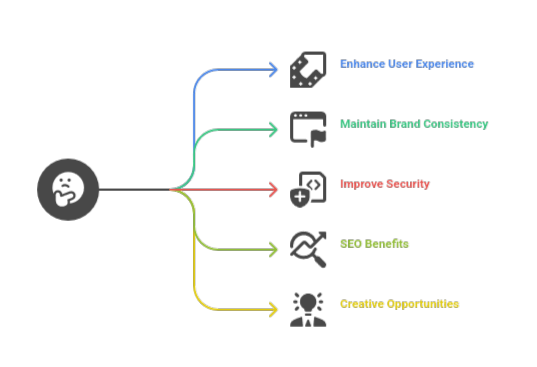Edit Custom Error Pages in DirectAdmin to boost UX, security, and stay on-brand. Our DirectAdmin Support team is ready to assist you.
Edit Custom Error Pages in DirectAdmin
Custom error pages improve user experience by substituting branded, informative content for generic server error messages. They help people return to your website and clear up confusion when there are unanticipated issues. By making changes to these pages, you can maintain the security, professionalism, and usability of your website.
What are Custom Error Pages?
Custom error pages displayed when a 404 or 500 problem occurs on your website. They direct users back to the correct location and show useful information in place of perplexing server notifications. In this manner, even when mistakes occur, your website maintains a professional and consistent appearance. They assist in obscuring technical information, which improves the security of your website.
What is Direct Admin?
DirectAdmin is a user-friendly, lightweight web hosting control panel that makes managing servers and websites easier. With its intuitive interface, anyone without much technical knowledge may manage domains, subdomains, DNS, email accounts, databases, and files. It also improves security with integrated capabilities for user authentication, firewall administration, and SSL setup. DirectAdmin is adaptable for a variety of use cases because it supports reseller and shared hosting setups.
Want to enhance your DirectAdmin setup further? Don’t miss our detailed guide for easy installation and configuration steps.
Importance of Customizing Error Pages
- Enhanced User Experience: Custom error pages provide useful information and concise explanations to lower bounce rates and maintain user engagement. Moreover, errors are transformed into satisfying user experiences by engaging designs.
- Maintains Brand Consistency: Custom error pages complement the theme, logo, tone, and style of your website, which helps to strengthen your brand identity. They also give the illusion of professionalism by displaying polish and attention to detail.
- Improves Security: Custom error pages conceal private data, such as internal configurations or server paths, to stop technological leaks. Additionally, they lower the possibility of exploitation and defend the website from possible attacks by hiding these technological information.
- SEO Benefits: Custom error pages improve SEO analytics by retaining users with useful links or content, hence lowering bounce rates. By enabling the design of particular headers to direct how search engines treat and interpret these pages, they also provide indexing flexibility.
- Branding & Creative Opportunities: By creatively promoting items or content and reflecting the essence of your brand, custom error pages can transform mistakes into chances for interaction.

Prerequisites
Depending on your web server or platform, a few basic requirements must be fulfilled in order to properly modify error pages. These specifications typically relate to server configuration, error page file preparation, public accessibility, and access rights.
- Permissions & Admin Access: Verify that you have the ability to upload or modify files and administrator permissions to server configurations (such as.htaccess, Nginx, and cPanel).
- Error Page Files: Produce attractive HTML pages with branding, clear text, and useful links; store them in compatible file types, such as.html.
Looking to manage PHP dependencies easily? Be sure to check out our expert guide for a quick and simple setup process.
Step-by-Step Guide to Editing Custom Error Pages
- Configure your CMS or server to send particular error codes (like 404 and 500) to personalized pages.
- Store pages and their contents (such as images and CSS) in places that are open to the public (such as the root directory or, if necessary, cloud storage).
- Access your server or hosting control panel by logging in with administrator credentials.
- Find the appropriate configuration file, such as nginx.conf or.htaccess, or navigate to the error page settings.
- Either change the current content or upload a new HTML file with your unique design after selecting the error code (such as 404 or 500).
- To test it, create the appropriate error and change the server configuration to point to your custom site.
Custom Error Pages in DirectAdmin
To create custom error pages in DirectAdmin, follow these three steps:
- Navigate to Advanced Features followed by Custom Error Pages after logging into your DirectAdmin panel.
- Click Edit after selecting the error code (such as 404 or 500) that you are looking to modify.
- If necessary, repeat for additional error pages after adding your unique HTML content and saving the modifications.
Want full control over your PHP environment? Don’t miss our expert guide to learn how to compile PHP easily within DirectAdmin.
[Need assistance with a different issue? Our team is available 24/7.]
Conclusion
Creating customized error pages is essential to providing a smooth and polished user experience even in the event of a malfunction. By deciding to edit Custom Error Pages in DirectAdmin, you can maintain your site’s consistent branding while simultaneously enhancing usability and security. This easy modification successfully gets users back on track while also giving the appearance that it is professional.
In brief, our Support Experts demonstrated how to fix the “554 5.7.1 : Relay access denied” error.







0 Comments